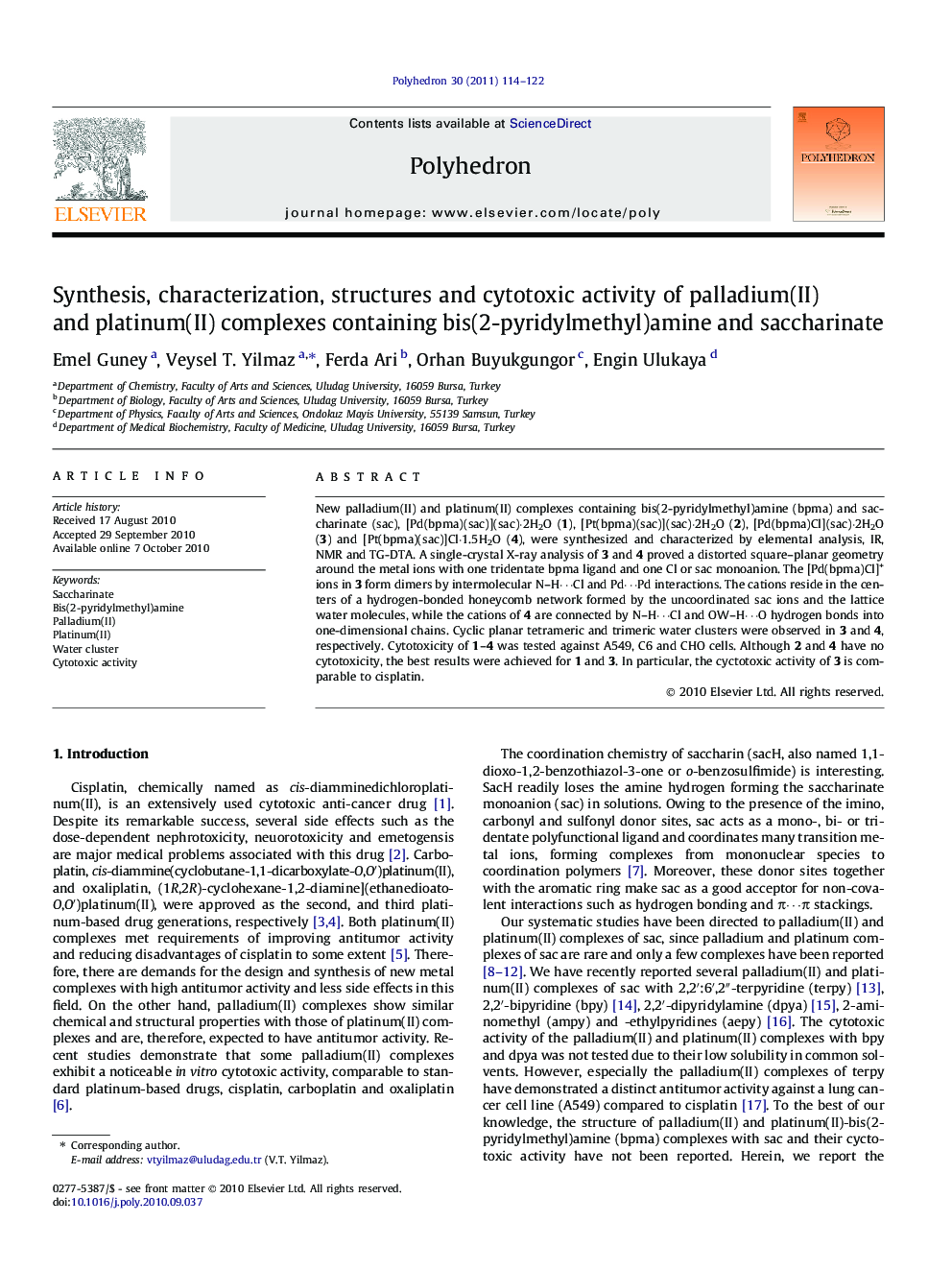| Article ID | Journal | Published Year | Pages | File Type |
|---|---|---|---|---|
| 1336472 | Polyhedron | 2011 | 9 Pages |
New palladium(II) and platinum(II) complexes containing bis(2-pyridylmethyl)amine (bpma) and saccharinate (sac), [Pd(bpma)(sac)](sac)·2H2O (1), [Pt(bpma)(sac)](sac)·2H2O (2), [Pd(bpma)Cl](sac)·2H2O (3) and [Pt(bpma)(sac)]Cl·1.5H2O (4), were synthesized and characterized by elemental analysis, IR, NMR and TG-DTA. A single-crystal X-ray analysis of 3 and 4 proved a distorted square–planar geometry around the metal ions with one tridentate bpma ligand and one Cl or sac monoanion. The [Pd(bpma)Cl]+ ions in 3 form dimers by intermolecular N–H⋯Cl and Pd⋯Pd interactions. The cations reside in the centers of a hydrogen-bonded honeycomb network formed by the uncoordinated sac ions and the lattice water molecules, while the cations of 4 are connected by N–H⋯Cl and OW–H⋯O hydrogen bonds into one-dimensional chains. Cyclic planar tetrameric and trimeric water clusters were observed in 3 and 4, respectively. Cytotoxicity of 1–4 was tested against A549, C6 and CHO cells. Although 2 and 4 have no cytotoxicity, the best results were achieved for 1 and 3. In particular, the cyctotoxic activity of 3 is comparable to cisplatin.
Graphical abstract[M(bpma)(sac)](sac)·2H2O (M = PdII or PtII), [Pd(bpma)Cl](sac)·2H2O and [Pt(bpma)(sac)]Cl·1.5H2O [sac = saccharinate and bpma = bis(2-pyridylmethyl)amine] were synthesized and characterized by IR, NMR and single-crystal X-ray diffraction. Cytotoxic activity measurements towards various cell lines showed that the palladium(II) complexes exhibit much higher activity comparable to that of cisplatin.Figure optionsDownload full-size imageDownload as PowerPoint slide
